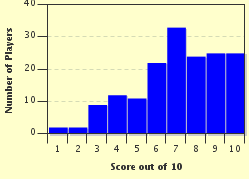Quiz Answer Key and Fun Facts
1. "Hey babe, you want to spend some time together? Let's get on a space shuttle together and travel near the speed of light, so that the time runs extra slow."
Which physicist might have adapted his theory of special relativity into that pick-up line?
2. "Hey babe, I feel like my whole world is revolving around you. I keep going round and round, but you're always the focus of my path."
Which astronomer might have attempted to meet a date using that simplified expression of his first law of planetary motion?
3. "Hey babe, I want you to observe an increase in the frequency of your voice. Why don't you come over closer?"
Which physicist might have crudely used this approach to explain his eponymous effect, which concerns the shift in frequency of waves in moving reference frames?
4. "Hey babe, I hope you're a boson, because I want to get so close to you that there better not be any degeneracy pressure between us."
Which modern physicist might certainly have felt "excluded" after trying that pickup line at the bar?
5. "Hey babe. Right now you may or may not love me, and the only way to figure out which one is to open up the box and let the wavefunction collapse."
Which scientist used that pickup line at the bar, then brought his date back to meet his cats?
6. "Hey babe, my heart starts throbbing at discrete energy levels whenever I think of you, like a star emitting photons of light."
Which physicist laid the groundwork for modern physics with his claim that light energy is quantized?
7. "Hey babe, I feel like an electron in the field of your proton. The attraction between us only increases the closer I move toward you."
Which scientist missed his mark on the pick-up line, but successfully hit upon the inverse-square relationship for the magnitude of the force between two charged particles?
8. "Hey babe, let's match our momenta. Then we could honestly say that you and I are on the same wavelength."
Which Frenchman probably wasn't talking about that wavelength when he hypothesized that all matter, even the computer you're reading this off of right now, could have wave-like properties?
9. "Hey babe, whenever you move away I see red. Come closer, and your recessional velocity will surely decrease."
Which American astrophysicist might have "telescopically" used that feeble attempt to attract his life partner?
10. "Hey babe, you are hot! Know what that means? You'll transfer thermal energy to your surroundings more quickly than a cool object."
Which brilliant physicist and mathematician might have tried using either his Law of Cooling or that lame apple story to pick up dates, explaining why he remained a bachelor his entire life?
Source: Author
adams627
This quiz was reviewed by FunTrivia editor
rossian before going online.
Any errors found in FunTrivia content are routinely corrected through our feedback system.

